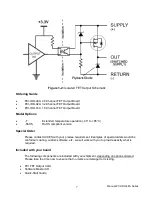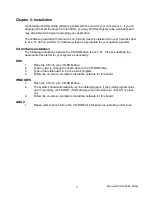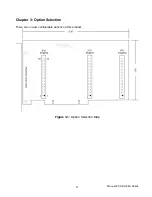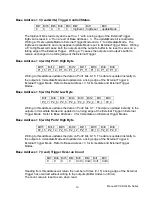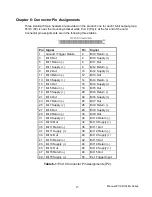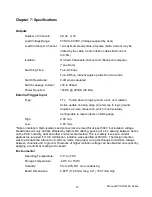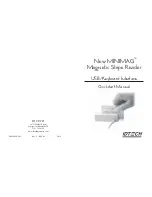
Manual PCI-IDO-48A Series
5
Chapter 1: Introduction
The PCI-IDO-48A is a PCI board providing opto-isolated discrete outputs with load voltages
up to 60VDC. Solid-state, P-Channel FET switches are used as the output elements
providing greater reliability and much faster turn-on and turn-off time than is possible with
electromechanical relays. Immediate and External Trigger modes offer flexibility for updating
the outputs.
Features
Up to 48 individually isolated digital Outputs
Immediate and External Trigger Modes
Trigger Over-run / Buffer Under-run error detection
All solid-state design permits higher throughput than is possible with electromechanical relays
Load voltages up to 60VDC
Outputs off at power turn-on and computer reset
Output connectors via on-card ribbon-cable headers
Lower cost per point than externally-racked solid-state relay modules
Applications
POS (Point-of-sale) Systems
Gaming Machines
Telecommunications
Industrial Automation
ATM (Automated Teller Machine) Systems
Multiple terminal control
Office Automation
Kiosks
Functional Description
This series of cards provide 48, 32, or 16 opto-isolated discrete outputs. Each output is
individually isolated using solid-state, P-Channel FET switches. These switches provide
higher throughput in comparison to electromechanical relays. The outputs require user-
supplied load voltages ranging from 5VDC to 60VDC. Diodes are included across the load for
inductive-spike protection.
The outputs are grouped into six 8-bit bytes. There are two software selectable modes for
updating the outputs: Immediate and External Trigger mode. Immediate mode updates the
outputs as they are written. External Trigger mode stores the written output values into a
buffer. The buffer contents are transferred to the outputs with a rising edge of the External
Trigger. Outputs can be written multiple times without an External trigger occurring.
However, only the last written values will be transferred upon a rising edge of the External
Trigger. The Trigger Control Register can also be software configured to reset both the buffer
contents and outputs on a falling edge. This allows pulse-width control of the outputs.







